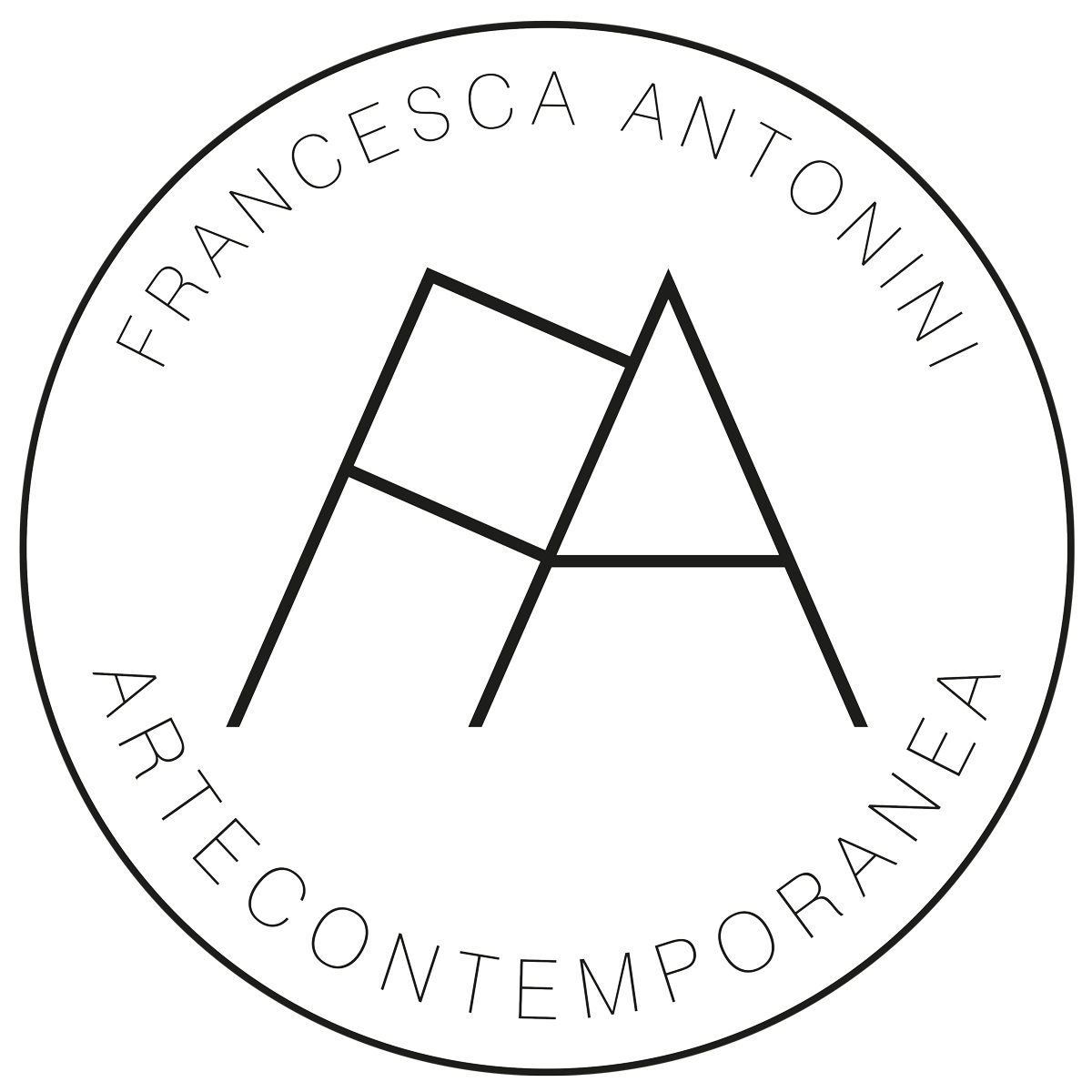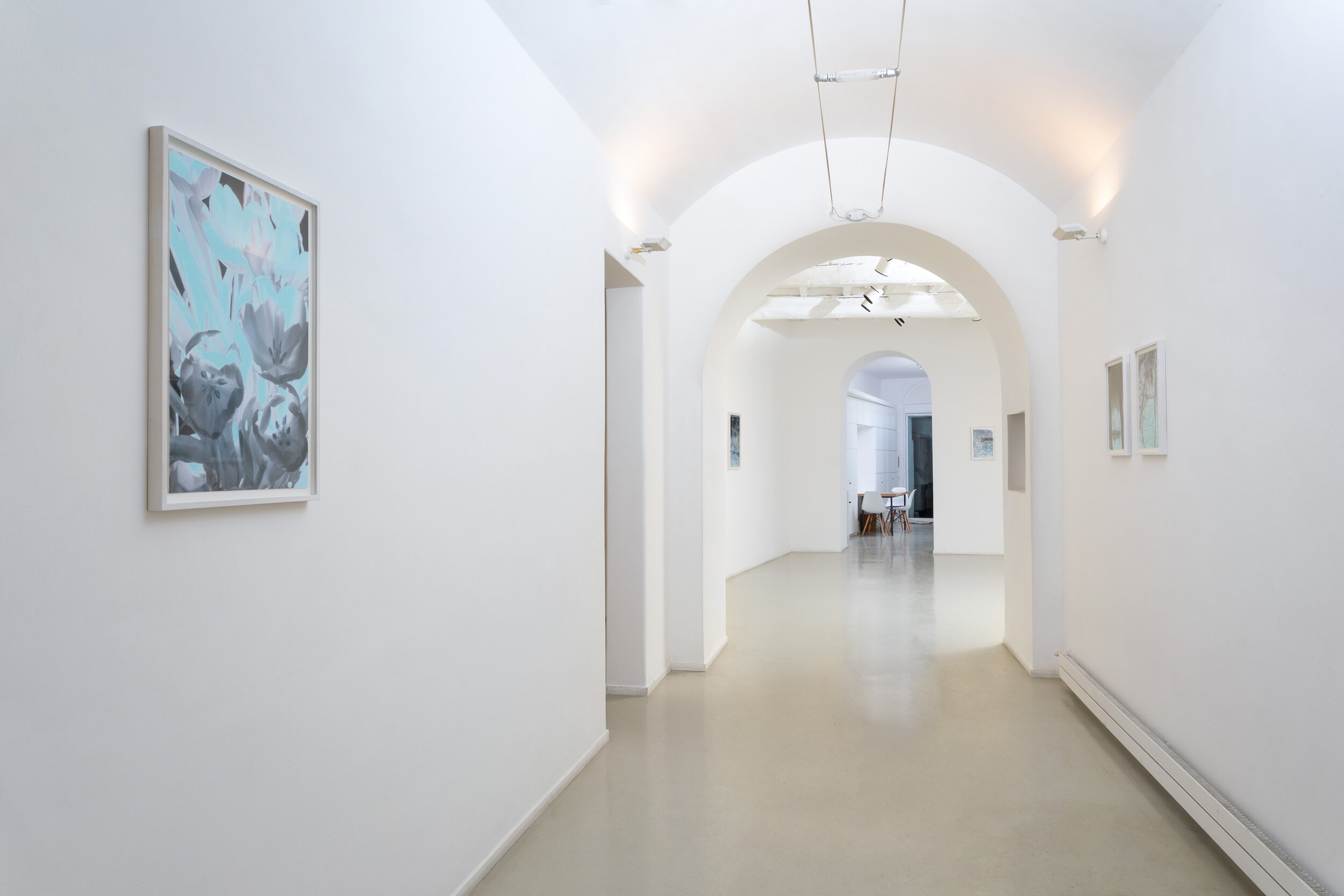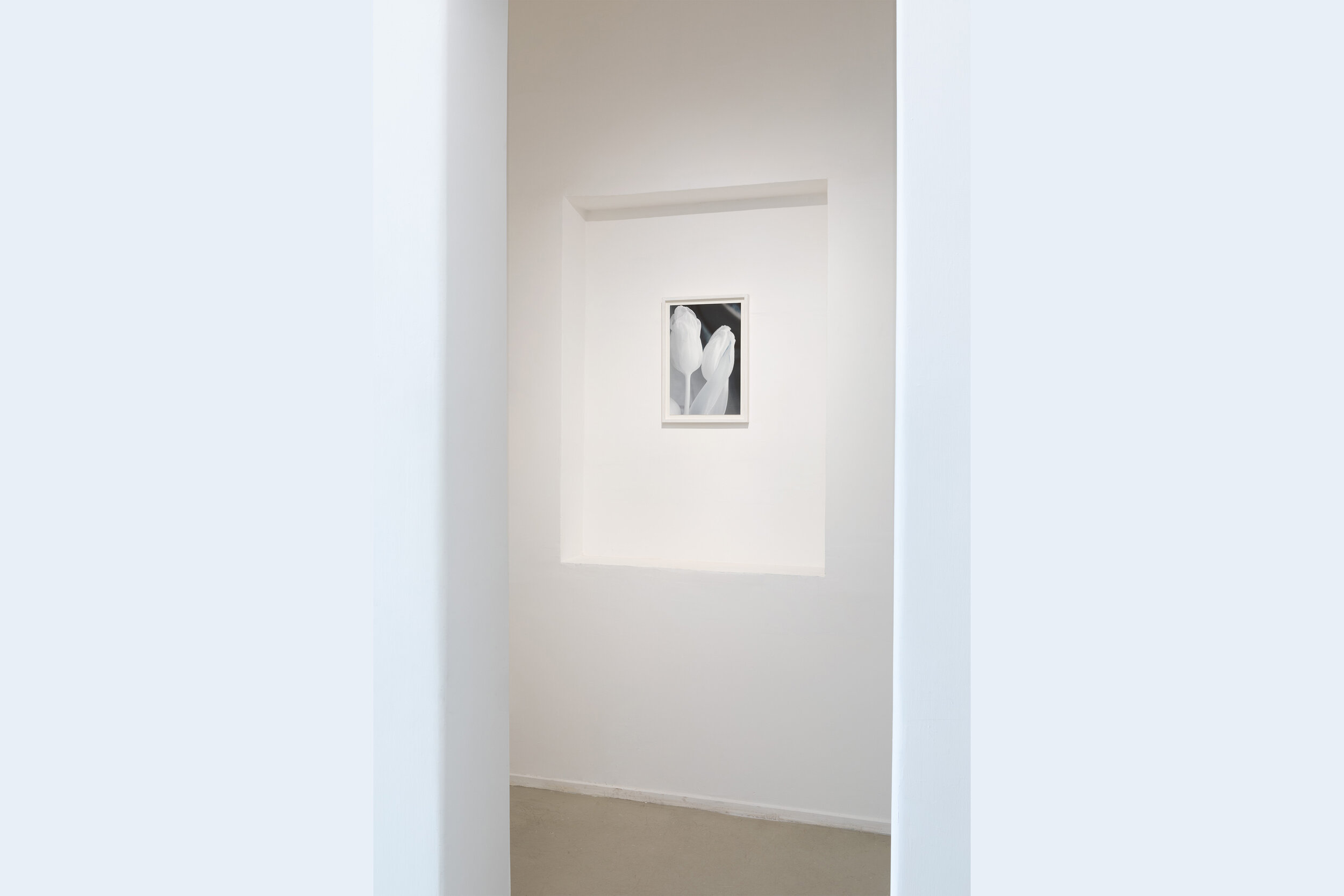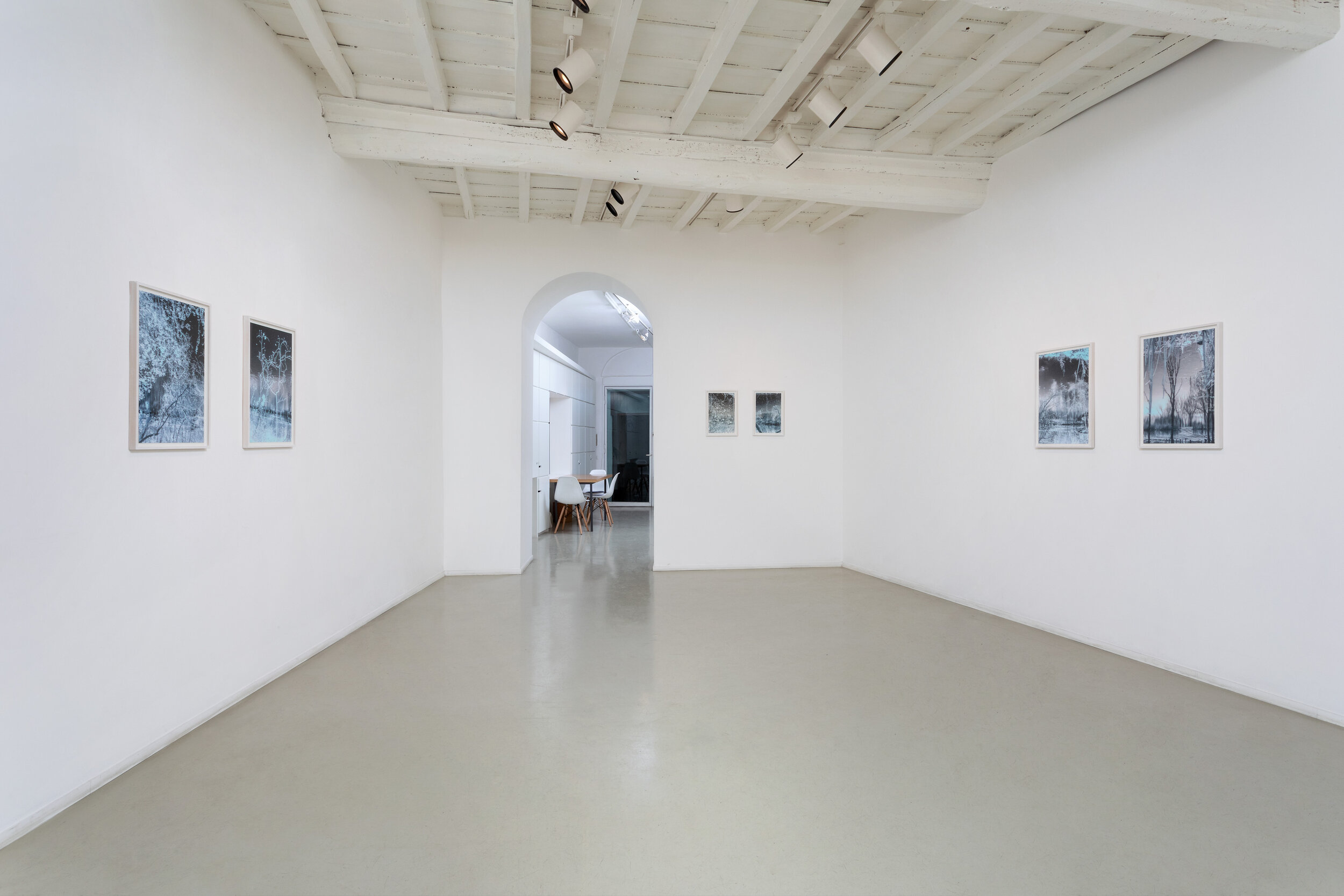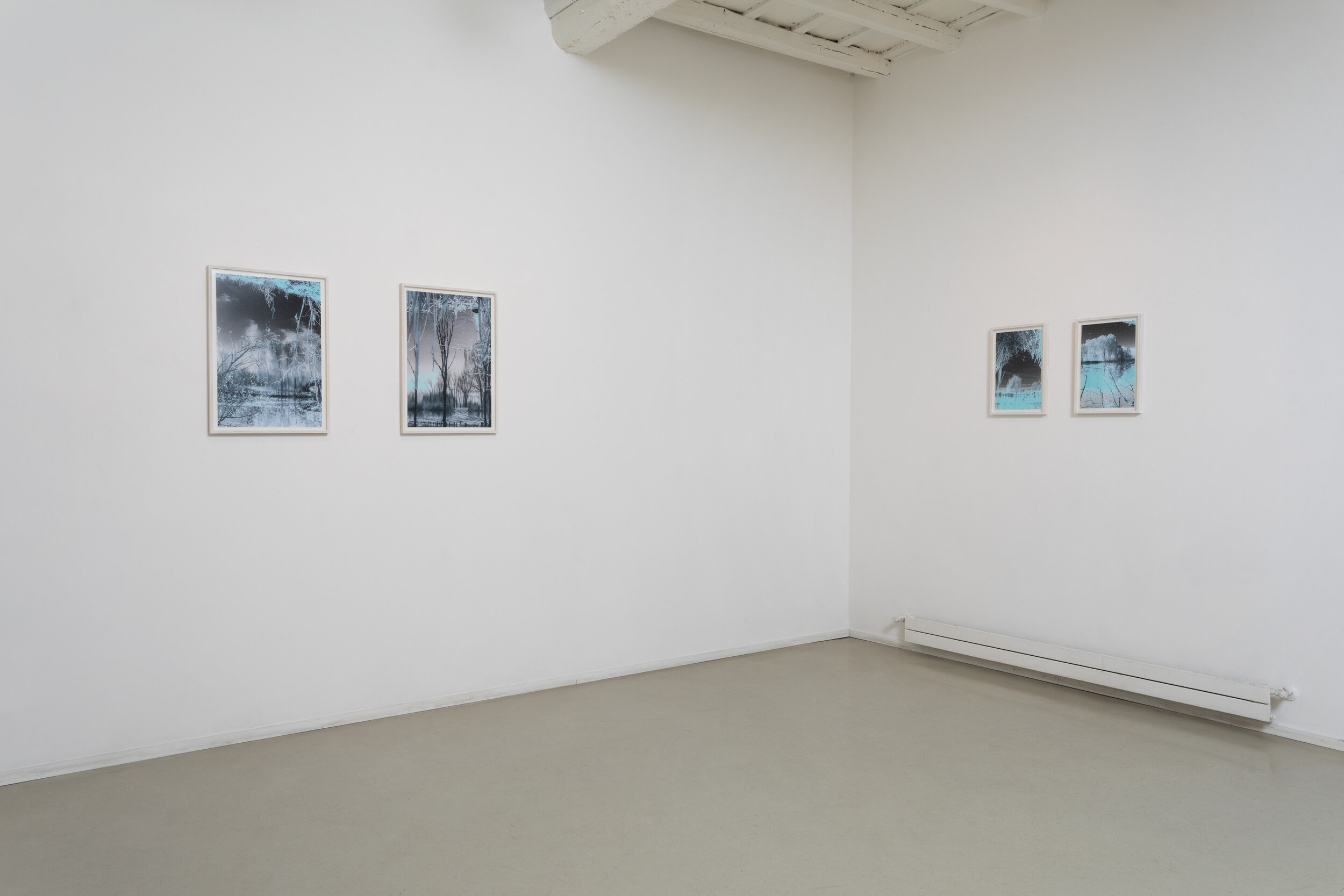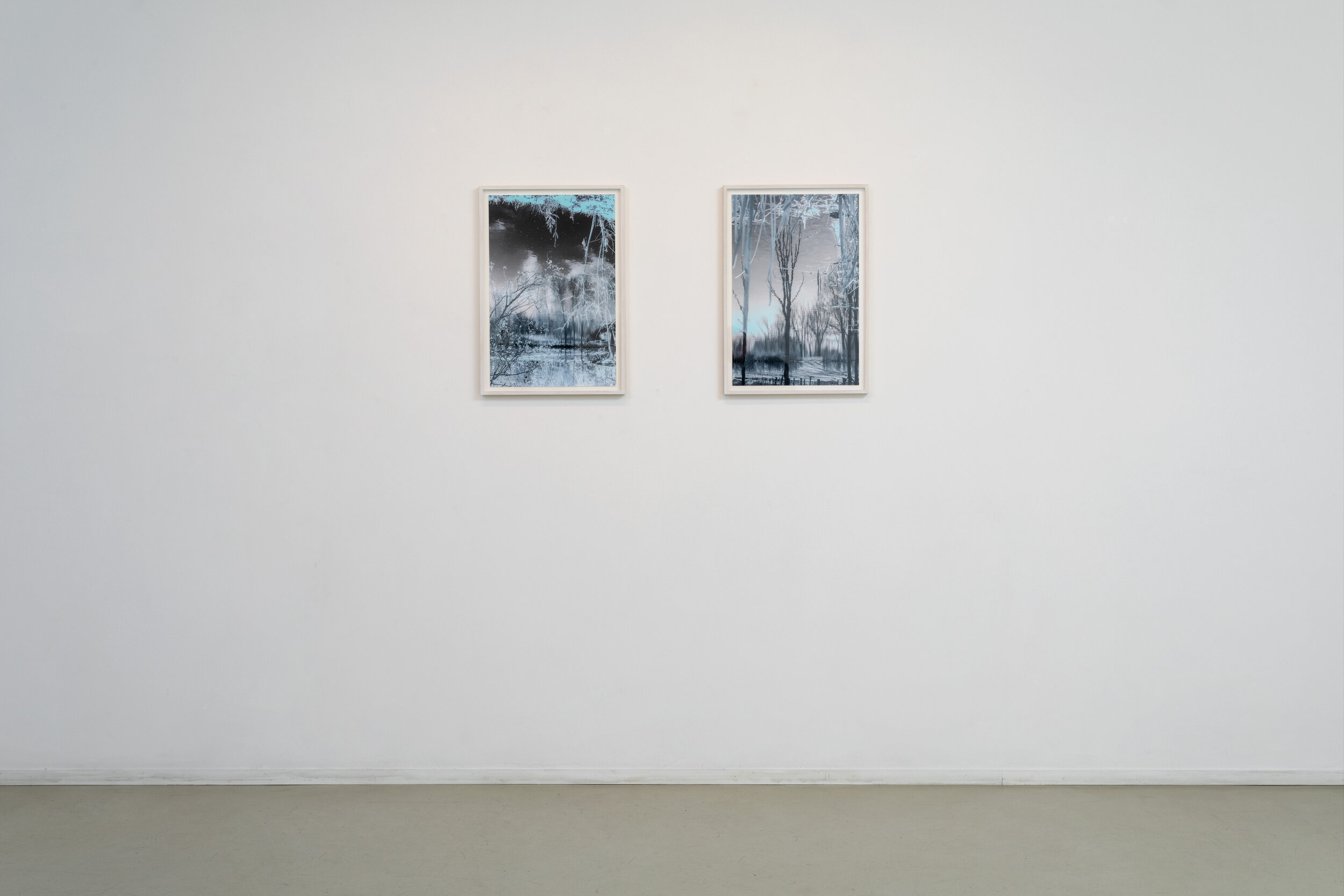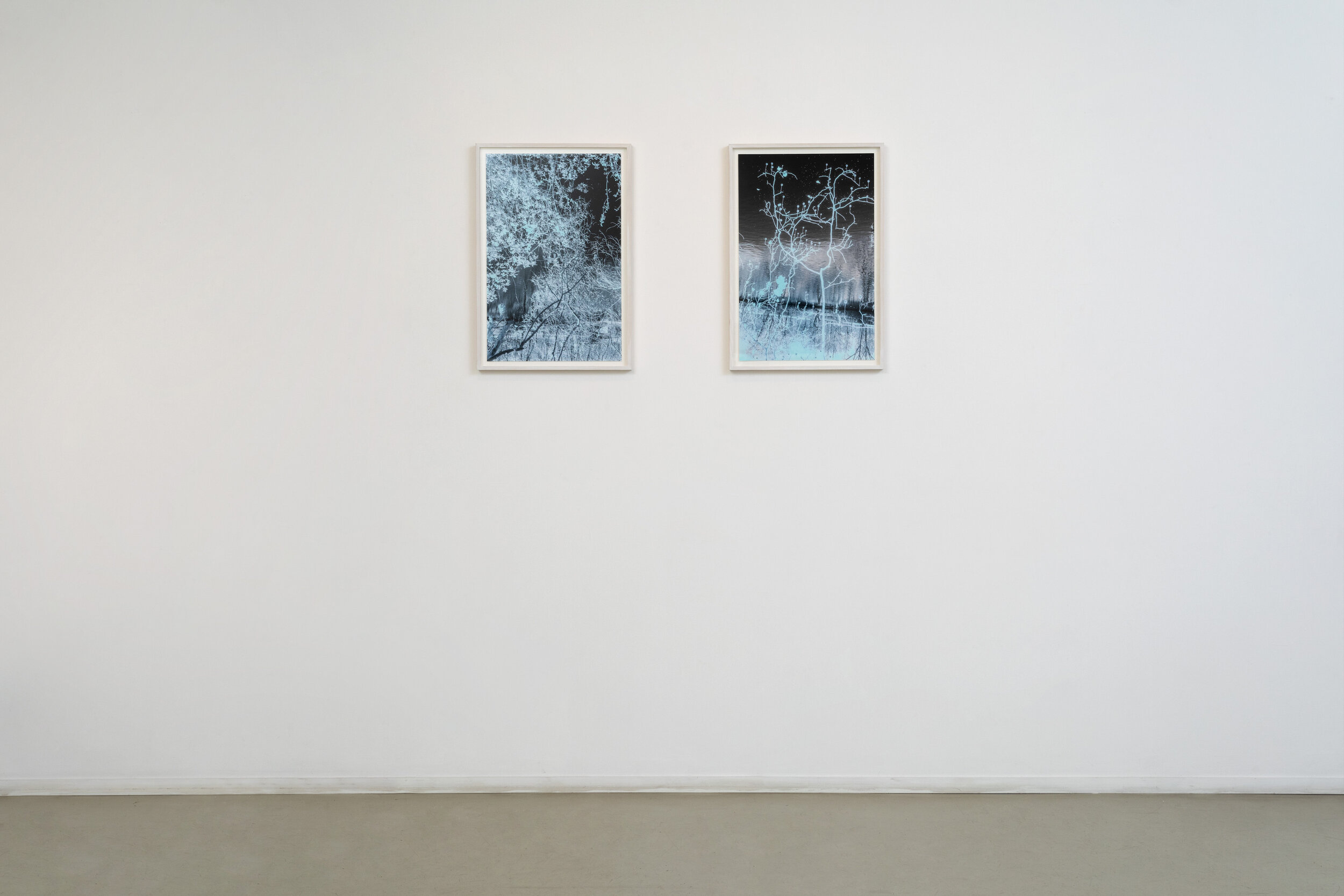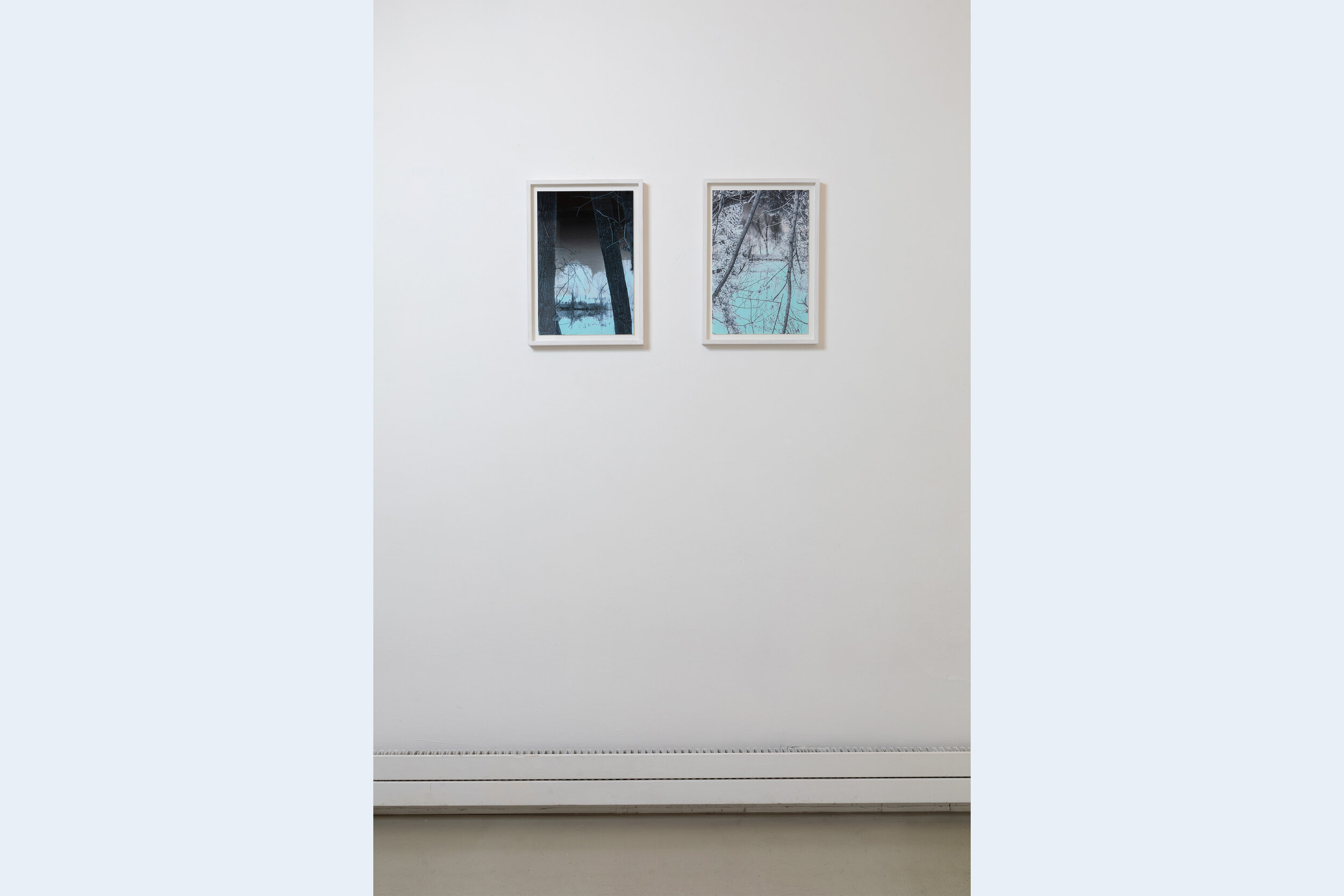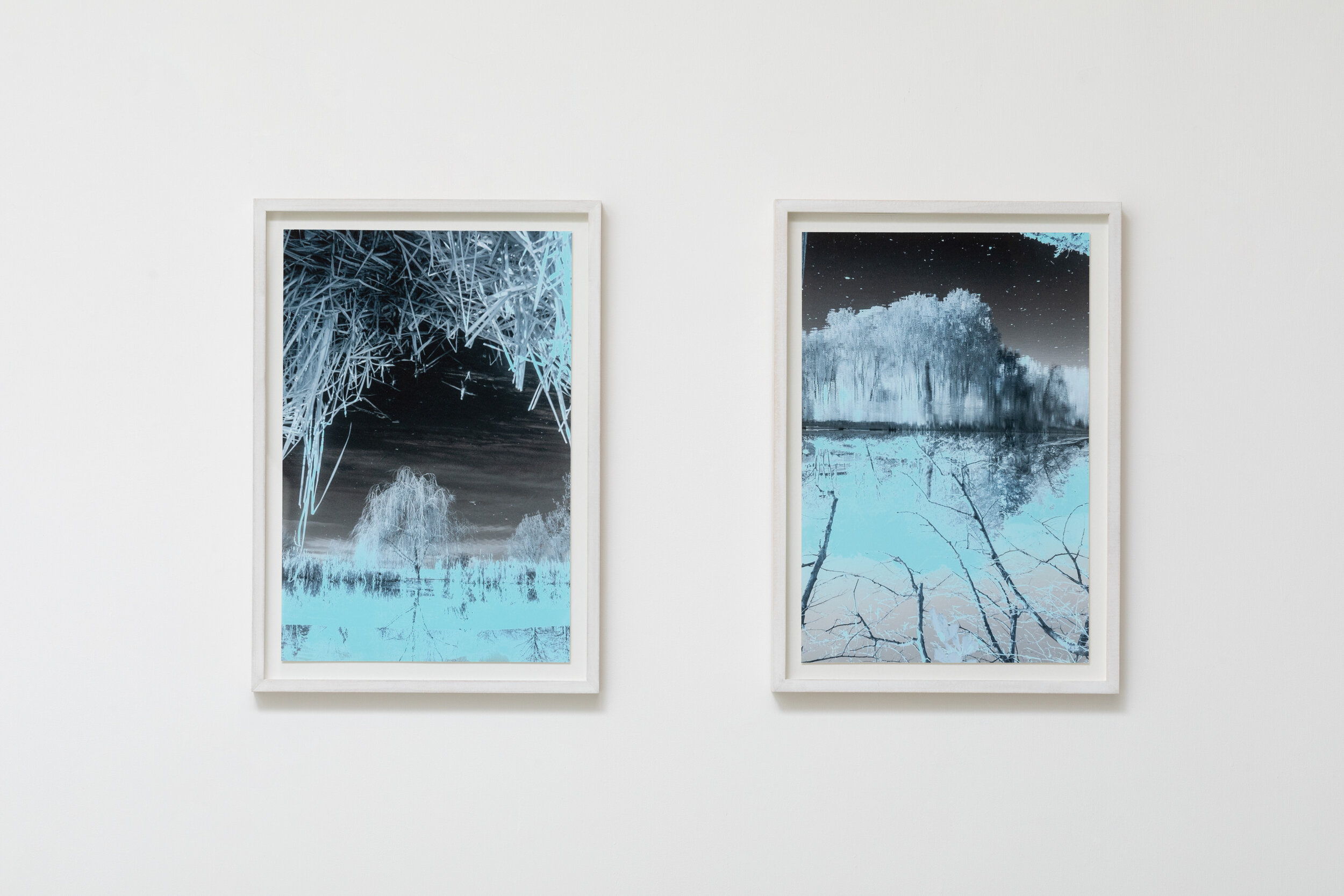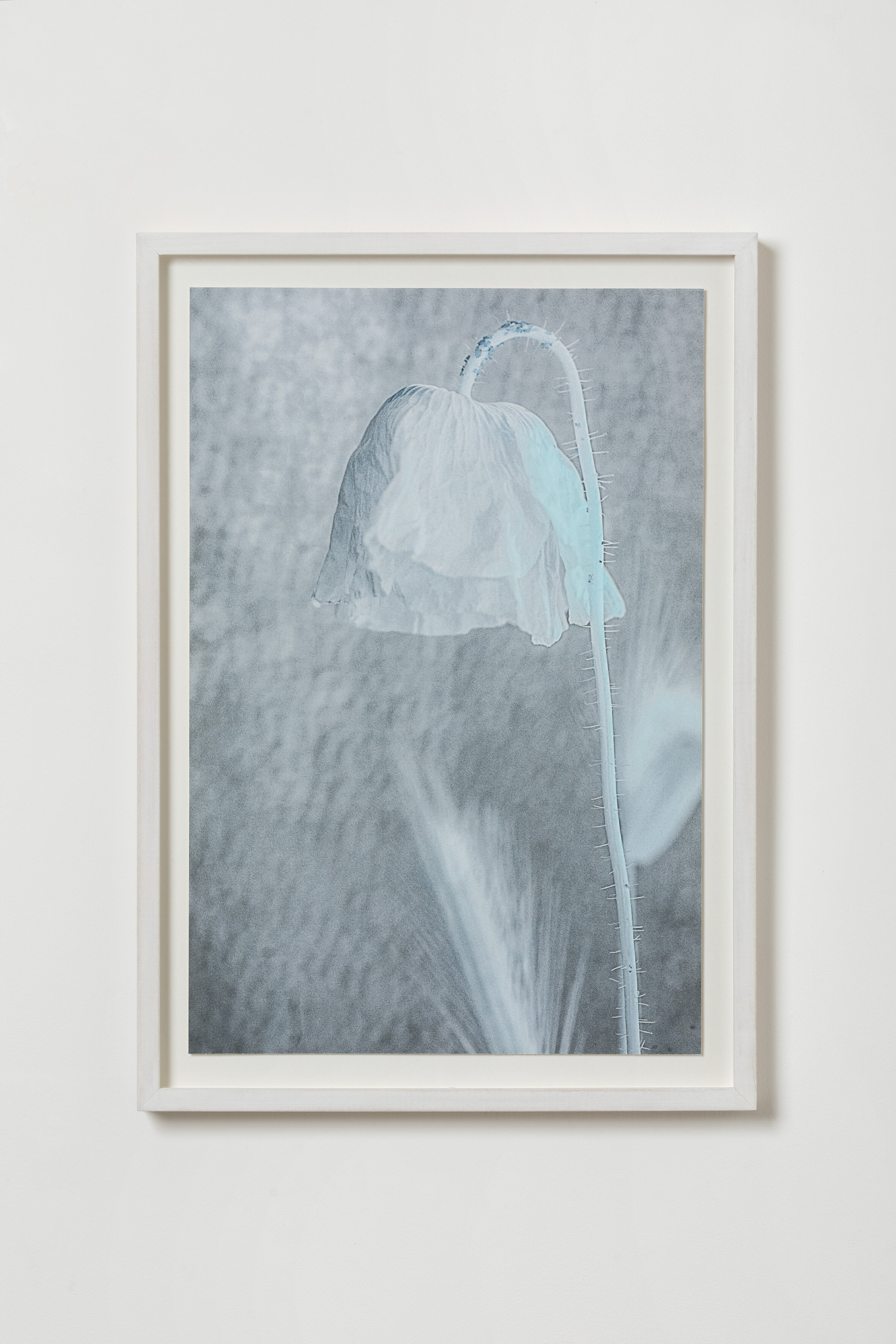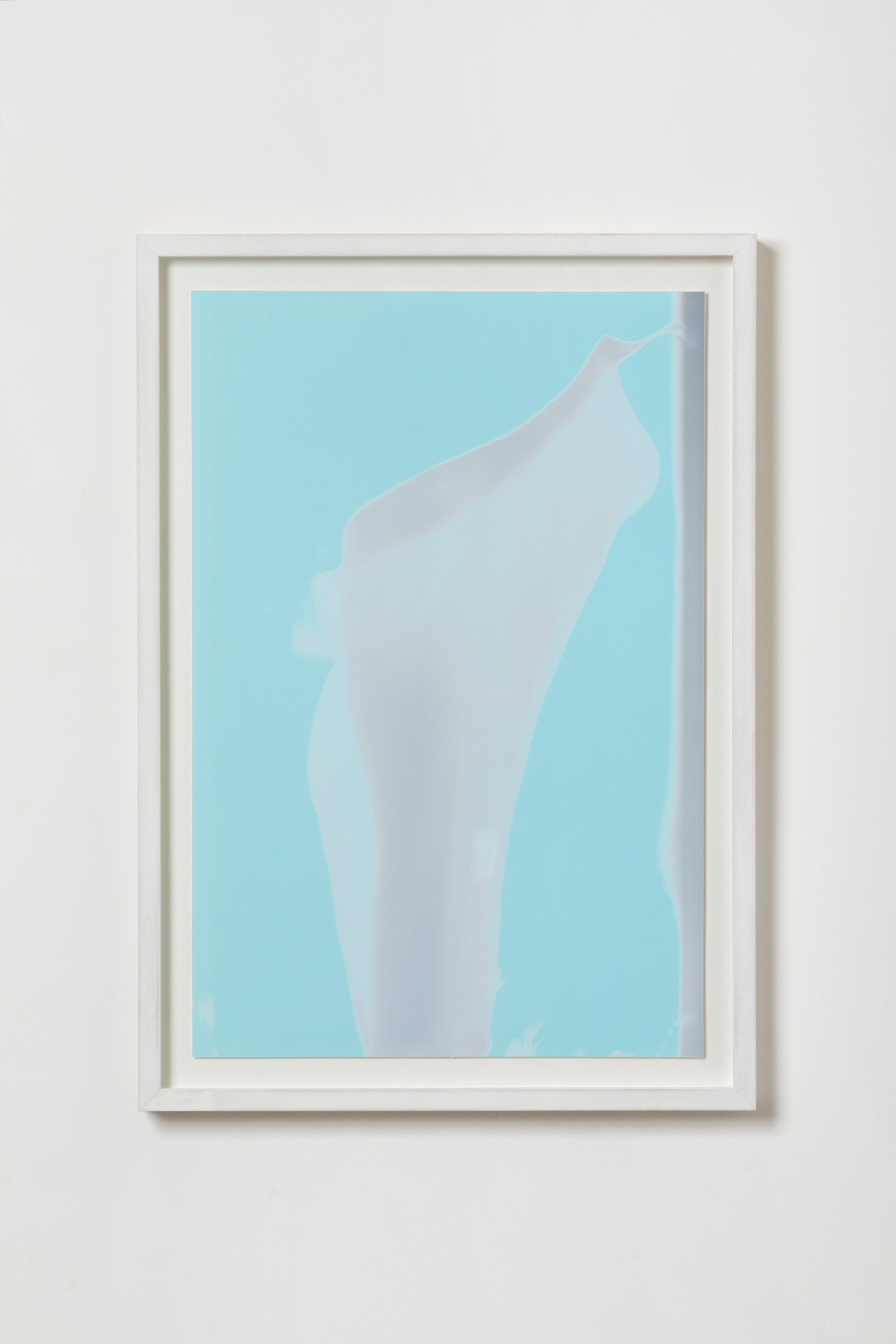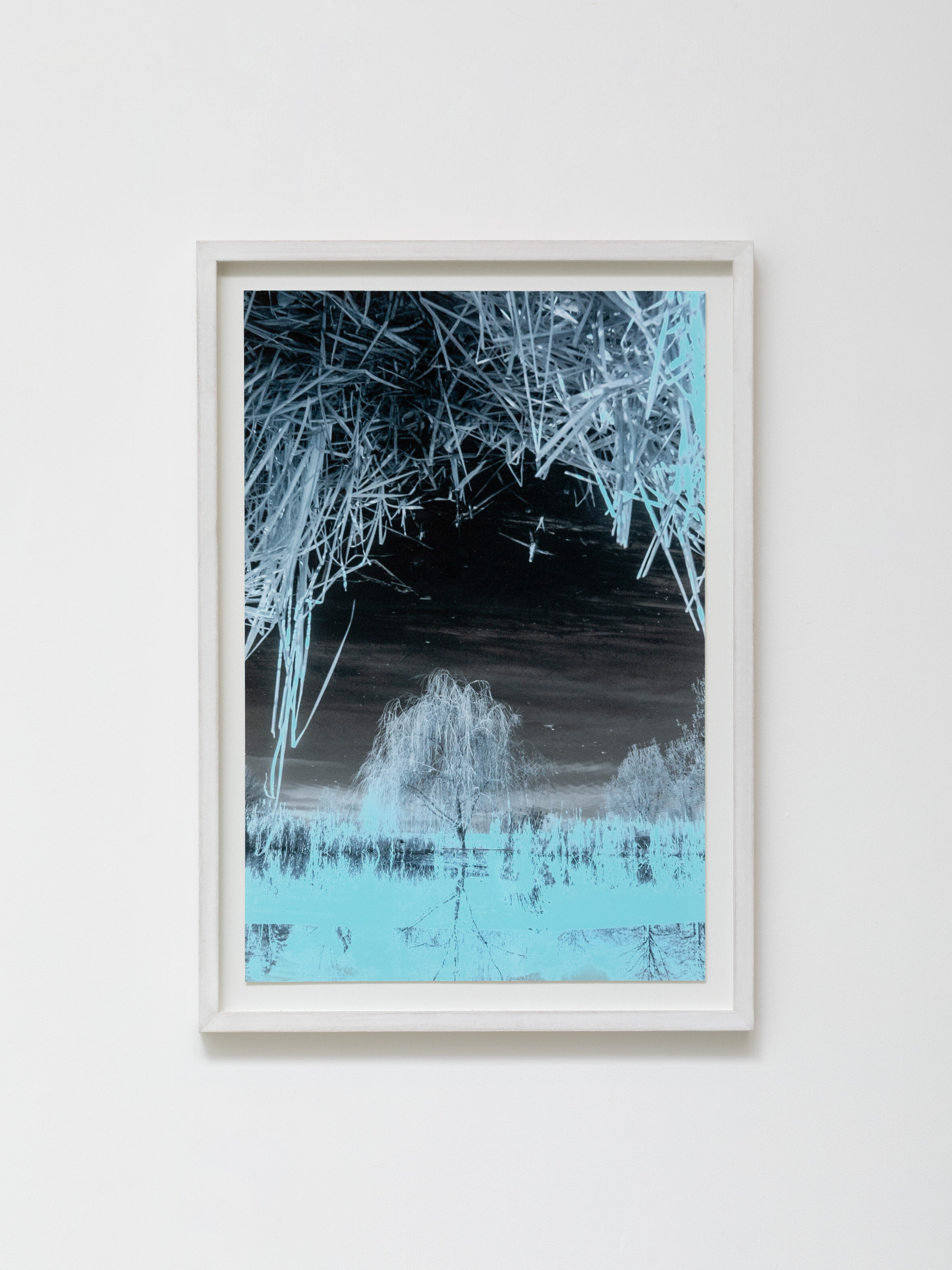NuvoleAlte
MONICA CAROCCI
WITH A TEXT BY CRISTIANA PERRELLA
FROM Thursday APRIL 15, 2021
UNTIL JUNE 12
NuvoleAlte
cristiana perrella
I know Monica Carocci since the early Nineties, when we were both at the beginning of our career and we were trying together to emerge in the lively and manly artistic scene between Rome and Turin. The first works I remember were the Barbie’s photographs, made with the unique technique that still characterizes her work. She used to take a black and white photoshoot, then, during development and printing phases, she manipulated it several times in the darkroom until she produced significant changes in the image and the support itself. At this point, she took a photograph of it and she printed it in large dimensions. From this complex process, which is at the same time manual and photographic — burning with acids, scratches, erasures, enlargements, —she obtains images that seem like visions: unfocused, indeterminate, mysterious light spots on a dark background. Overexposed, blurry, polarized subjects are transfigured and even if they look still familiar, they are unrecognizable. But they still remain strongly and deeply present, acting like memories which are not always adaptable to reality, rather creating their new and different one, which is nonetheless real. Her photographs literally bring to light what the human eye is uncapable to catch and perceive: she shows the secret energy of things, their soul, also of most trivial ones.
Through the years Monica has developed this ability to give a new presence to things we are surrounded by through her work, she gives them a new life, a metaphysical life.
She applied her look and technique to “classical” subjects of art and photography (portrait, landscape, still life, animals) showing how generative and fresh they still can be.
Her images have the immediacy of a Rayogram and the revealing aspect of a Kirlian effect (the process which has been thought capable of showing the aura). They present themselves, in their supernatural beauty, as mark of reality, they seem to directly appear on the paper, without any use of technology. They seem to merge and become one with the support’s surface, which is a full- bleed baryta paper, cutted into irregular shape. The abundance of expression possibilities and the deepness of her approach to photography translated into an extremely consistent and distinctive path. In thirty years she has never abandoned her technique and she never got tired of the darkroom, the use of the analogic, the black and white, the alchemy of interventions, mistakes and randomness, which all contributed to the generation of her images.
Only under extraordinary conditions she has deviated from her technique. It was in 2019, in the occasion of her trip to Africa, in Uganda — where she went to interpret the work of a reconstructive surgery onlus — and during the isolation and confinement of the pandemic.
In addition to her Leica she brings with her a modified digital camera. She had been thinking about working with infra-red for a long time, so she makes an experiment and converted a second-hand Nikon bought on Ebay, removing a filter above the sensor. She opted for digital because it permitted to work quickly, without the long wait that the conditions couldn’t allow (it would have been very hard in that environment).
The infra-red photography is a look into the world of invisible. Human eye can see wavelenghts in the spectrum from purple to red and it doesn’t perceive beyond. The camera, instead, can see much further, it can catch the radiations which make water and sky almost black and leaf of trees clearer, and that can penetrate slightly under the skin, giving to faces an ethereal and unreal effect.
The terrible scars she photographs in Fort Portal are not crude as reportage pictures, they turn into drawings on skin, which become lighter.
Once back to Italy, her experimentation was supposed to end, but pandemic, lockdown and forced solitude, suddenly made the work in the darkroom heavy, almost unbearable.
So she set aside the analogic camera and came back to the infra-red Nikon, directing again her glance on the world, on familiar and close things, that her shots translate into a new reality.
During this process the transformation happens in the very moment of the photoshoot, without the full-contact approach to the photographic material.
Turin is a very green city, with a river and parks. During the last year nature has been a solace – for me as well —, plants and flowers inside, meadows and trees outside. For Monica it’s a territory to explore with a new look, an elsewhere that gives a shelter to imagination.
It is enough to invert the point of view, overthrowing it, swapping water’s reflex and things that produce them; it is enough to use new surreal, dreamlike, nocturnal colours; it is enough to give space to details for the eye to lose itself and not to find the way back to reality. Everything changes, a magical world appears, suspended in a state of twilighty hesitation, a condition of suspension that announces a profound change.
Radioactive, fairy-tale, still landscape generates both fascination and dizziness: it is the epiphany of a world on which man can’t act, and that could no longer include him.
To give it a shape, to represent it with an image, is a way to respond to this crisis, to affirm our own presence, our own existence, while understanding our fragility.
PRESS REVIEW:
